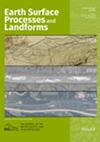Advancing gully initiation modelling by means of a Curve Number (CN) method: A way forward?
Abstract
Despite gullies significantly contributing to land degradation happening globally, predicting their spatial patterns in relation to climate, land use, and other factors remains challenging, especially in a process-oriented manner. Nevertheless, such models appear crucial for developing effective land management strategies. Over the past years, several studies have proposed using the curve number (CN) method to estimate potential runoff discharges. However, although promising, the actual performance of such a CN-based approach remains poorly tested, especially at large scales. Here we address this gap by evaluating the CN method's ability to predict gully head occurrence at different spatial scales in a process-oriented way. We propose a gully head initiation (GHI) index, reflecting the ratio between a shear stress index (SSI) and a critical shear stress index (CSI). On the one hand, the SSI is determined by a pixel's contributing area, slope and a CN-derived runoff depth estimate based on land use and soil type. On the other hand, the CSI is based on the estimated pixel soil clay content. We applied the GHI index at both the continental scale of Africa and at the local scale in two small (<10 km2) catchments in the Ethiopian highlands, using state-of-the-art, high-resolution Geographic Information System (GIS) data layers, and tested the ability of the GHI index to distinguish gully heads from non-gully heads based on extensive datasets of mapped gully locations. Results show that the GHI index reasonably distinguishes pixels with and without gully heads across different scales, with area under the curve (AUC) values of 0.67 and 0.65 for the continental and local scale, respectively. The GHI index offers a conceptually sound description of gully initiation conditions, has low data requirements and requires no calibration, suggesting its potential to simulate gully erosion in more process-oriented ways. However, its performance is clearly lower than data-driven approaches that empirically relate gully occurrence to environmental variables derived from similar GIS layers (AUC of 0.83 at continental scale, 0.73 at local scale). We discuss possible reasons for this performance gap, such as the limited ability of the CN method to accurately simulate contrasts in runoff production and the high sensitivity to error propagation inherent to such a process-oriented approach, and explore future improvement avenues.

 求助内容:
求助内容: 应助结果提醒方式:
应助结果提醒方式:


